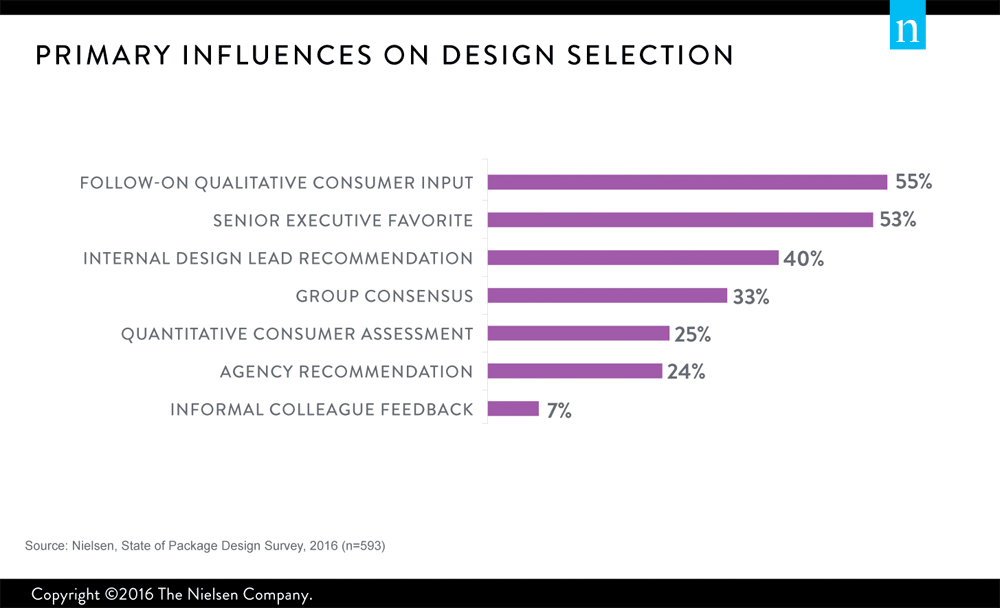Should CEOs Be Creative Directors?
May 19, 2016
![]() Few people would answer “yes” to this question—yet that’s the current state of package design at many consumer products companies. According to a recent Nielsen survey of consumer packaged goods (CPG) professionals, 53% say that that the opinion of senior executives is one of the sources given the most emphasis when making design decisions. That’s more than twice the percentage who report using quantitative consumer assessment or agency guidance to make decisions.
Few people would answer “yes” to this question—yet that’s the current state of package design at many consumer products companies. According to a recent Nielsen survey of consumer packaged goods (CPG) professionals, 53% say that that the opinion of senior executives is one of the sources given the most emphasis when making design decisions. That’s more than twice the percentage who report using quantitative consumer assessment or agency guidance to make decisions.
It’s surprising that so little rigor is applied to design selection given that 67% of CPG professionals believe package design can be one of the most effective marketing levers. With little investment required relative to advertising, successful redesigns—identified using objective market feedback—generate an average 5.5% lift in forecasted revenue.

Unfortunately, most current design processes aren’t structured to produce reliably strong results. Approximately nine in 10 redesigns fail to yield meaningful sales improvement for the brand, while 50% of package designs actually harm brand perceptions by dragging them down on key personality traits.*
Lack of objectivity in the design process may be to blame for these lackluster and, in some cases, unfavorable outcomes; 56% of CPG professionals and 67% of agency professionals agree that the design directions chosen are often not the strongest. Moreover, when asked about pain points in the package design process at their companies, CPG professionals (51%) cited subjective decision-making as their top complaint. A same percentage of agency professionals, who aren’t always the most fervent advocates of mixing research with design, would welcome more market feedback in order to suspend senior client stakeholders’ subjective judgment.
Agency professionals expressed particular frustrations with subjective decision-making during the refinement stages of design. Often, senior stakeholders arrive late to the process with different opinions, which results in longer timelines. Moreover, to achieve consensus, clients will often make unfortunate design compromises by arbitrarily combining elements from different designs. More than three in five agency professionals agree that this tendency to create “Frankensteins” is pervasive and problematic. In fact, 63% of agency professionals feel that the base design they present to clients is often better than the final version that addresses all their refinements. In the end, the design process often turns out to be longer, more frustrating and more expensive than anticipated—only to yield sub-par results.
How can companies reduce subjectivity in their design processes and address other common pitfalls to yield more successful in-market outcomes? Top-ranking best practices include understanding what works and what doesn’t about the current package, making sure the creative brief is clear and informed, and knowing the competitive landscape. To learn more, watch Nielsen’s webinar, “Defy the Odds: Bringing Breakthrough Package Designs to Market.”
*Source: Scott Young of PRS, “Insights to Improve Packaging Success Rates and ROI,” dmi:Review, 2011; Nielsen Design Category Audit Database.





























